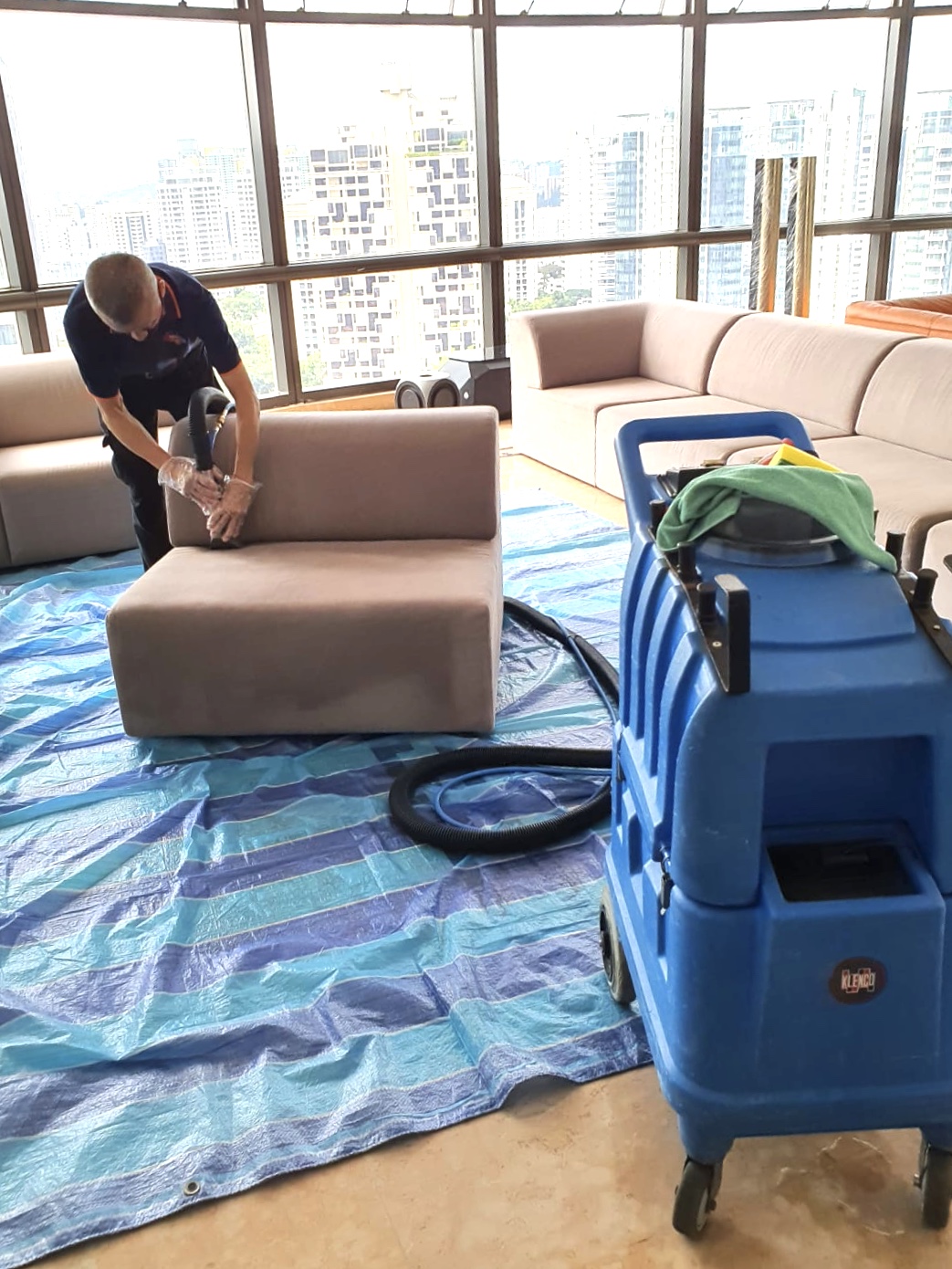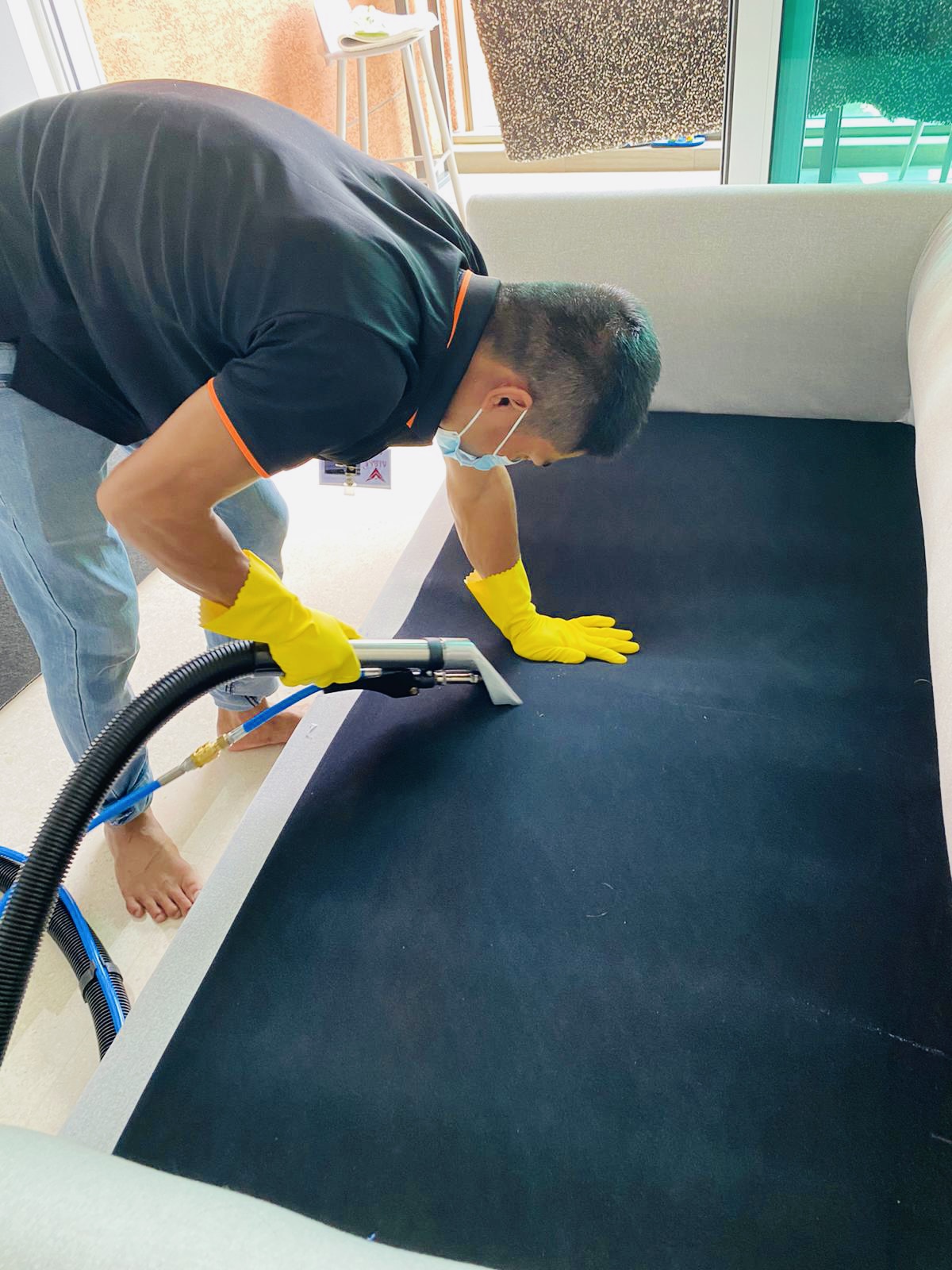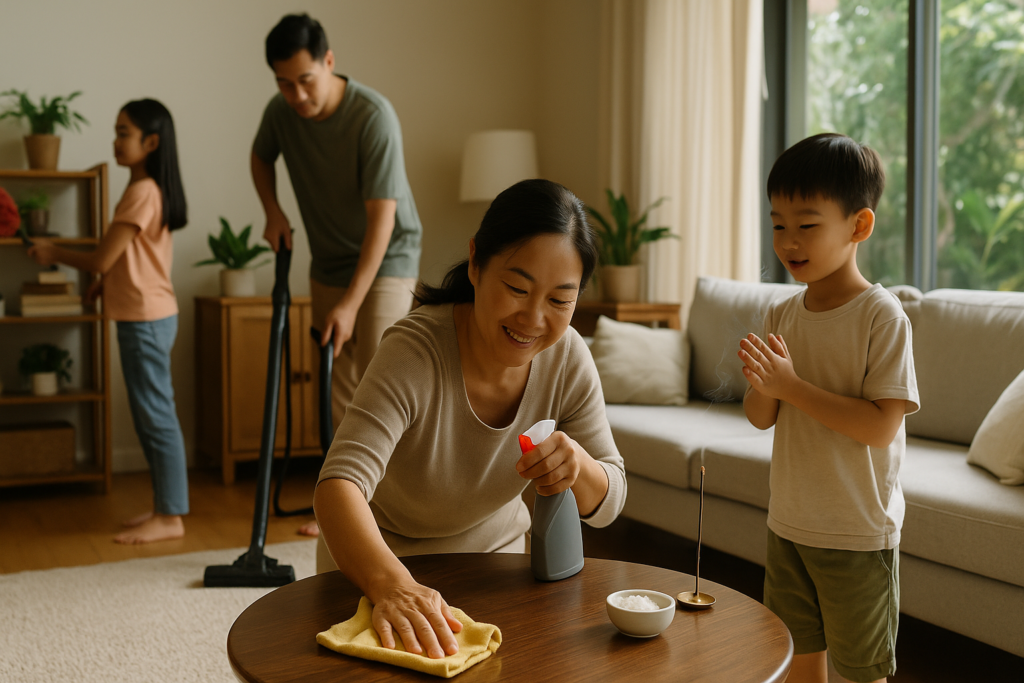The sofa is where families gather, and friends and guests relax. Even pets find comfort in this living room furniture. However, this well-loved piece of furniture can also harbour an unwelcome collection of germs and bacteria.
Sofas often come into contact with various contaminants, from food crumbs to pet fur and dead skin cells, making them a surprising breeding ground for microbes. Understanding why sofas are hotspots for germs and knowing how to deep clean them is essential for creating a healthy home.
Why Germs and Bacteria Thrive on Sofas
Sofas are naturally prone to collecting germs and bacteria due to the way they are built and used. How often they are used, their upholstery material and their structure are some factors that make them a great breeding environment for microbial growth.
Structural and Material Factors
- Fabric and foam. Many couches are made from cotton, linen, leather or synthetic blends that are porous and absorbent. These fabrics trap moisture, pet dander, dirt, dust mites and oils, creating a perfect place for germs to thrive. Foam pads underneath add another porous layer where germs can settle.
- Seams and crevices. Sofas have cushions, seams and folds that trap food debris, dirt and dust. These hard-to-reach areas are a breeding ground for germs.
- Lack of ventilation. Sofas usually stay in one position for months or years without exposure to sunlight or adequate airflow. This means moisture from spills or sweat lingers, encouraging the growth of bacteria and mould because of bad indoor air quality.
Sources of Contamination
Here are some everyday activities that make your couch vulnerable to more bacteria contamination.
- Human use
- Sweat and skin cells. Humans shed skin cells daily, and sofas are natural magnets for these particles. Along with sweat and oils, these create a food source for bacteria and dust mites.
- Food and drink spills. Eating on the sofa can leave behind crumbs and sticky residues that settle into the fabric, providing nutrients for microbes.
- Pets
- Pet hair, dander and even dirt tracked in from outside can collect on sofas, bringing bacteria or allergens into the home.
- Environmental factors
- Dust, pollen and humidity can all contribute to the accumulation of dirt and bacteria on the sofa’s surface and within it.
Common Types of Germs Found on Sofas
Your sofa can harbour various germs, some of which pose health risks. Here are some examples:
Common Bacteria
- E. coli. This bacteria often finds its way onto sofas through food particles or unwashed hands. It can cause gastrointestinal problems if ingested.
- Staphylococcus aureus. Naturally present on human skin, this bacteria can transfer to the sofa and potentially cause skin infections or respiratory issues.
- Salmonella. Usually associated with foodborne illnesses, Salmonella can linger on surfaces and lead to stomach pains, diarrhoea, and other serious gastrointestinal issues.
Allergens and Mould
- Dust mites. These tiny creatures thrive on flakes of dry skin and can trigger allergies, asthma and other respiratory conditions.
- Fungal spores. Couches in humid environments can develop mould or mildew, which may cause respiratory irritation or worsen asthma.
Potential Health Impacts
Prolonged exposure to germs and allergens on sofas can lead to many health issues, including:
- Allergic reactions, such as constant sneezing, itching, or watery eyes.
- Skin irritations or infections caused by direct contact with bacteria.
- Chronic respiratory issues from inhaling allergens, mould spores, or bacteria.
How to Keep Your Sofa Clean
Keeping your sofa clean doesn’t have to be complicated, but it does require regular attention. By adopting a few habits in upholstery cleaning and using effective deep clean methods, you can significantly minimise the growth of germs and bacteria. Here are some ways to keep your sofa clean.
Simple Steps to Maintain Sofa Hygiene
- Invest in sofa covers. Sofa covers act as a shield between bacteria and your sofa’s upholstery. Choose washable covers and clean them every two weeks to maintain freshness.
- Vacuum regularly. A vacuum with an upholstery attachment can eliminate dust, crumbs and dirt at least once a week. Pay special attention to crevices and the spaces between cushions.
- Keep pets clean. Groom your pets regularly and wipe their paws before they hop onto the sofa. This helps minimise the transfer of fur, dirt and bacteria onto the upholstery.
- Control indoor humidity. High humidity encourages mould and bacterial growth in the sofa’s foam and upholstery. Use a dehumidifier to improve air quality.
- Limit eating on the sofa. Avoid eating on the sofa whenever possible. If you snack there, use a tray to catch crumbs and clean up after spills.
- Act quickly on spills. Blot spills with a clean cloth or kitchen towel to soak up the liquid, then clean the area with a fabric-safe solution. Prompt action prevents stains and bacteria build-up.
- Deep cleaning. Professional cleaning services should be incorporated every six months to address dirt and germs that regular cleaning can’t remove.
Cleaning Frequency Schedule
Task | Frequency |
Dusting and spot cleaning | Daily |
Vacuuming | Weekly |
Sofa cover washing | Bi-weekly or monthly |
Professional cleaning | Every 6 months |
The Importance of Professional Sofa Cleaning
While regular at-home cleaning helps maintain surface hygiene, professional cleaning services go deeper. Bacteria and allergens can seep into the fabric and padding of your sofa over time, making household tools less effective in getting rid of dirt and germs.
Why Professional Cleaning Matters
- Deep disinfection. Professional methods like steam cleaning reach into the layers of the sofa to eliminate bacteria, mould and allergens.
- Stubborn stain removal. Trained cleaners can handle tough stains without damaging the fabric.
- Prolonged lifespan. Regular professional care prevents fabric wear and tear, extending the lifespan of your sofa.
Total Cleanz Sofa Cleaning Services
At Total Cleanz, we specialise in thorough and safe sofa cleaning. Our team uses eco-friendly products and powerful cleaning equipment to sanitise your sofa. With our professional and commercial cleaning services, you can now sit or nap on a fresh and clean couch.
Conclusion
Your sofa is more than just a piece of furniture – it’s a place for family celebration, relaxation and entertainment. Unfortunately, it can also be a breeding hotspot for germs. Understanding the factors contributing to contamination and having simple cleaning habits can keep your sofa looking and feeling fresh.
Regular professional cleaning also adds an extra layer of protection, ensuring that your sofa remains a safe, clean and comfortable space for everyone around the house. A little effort goes a long way to create beautiful living spaces.










